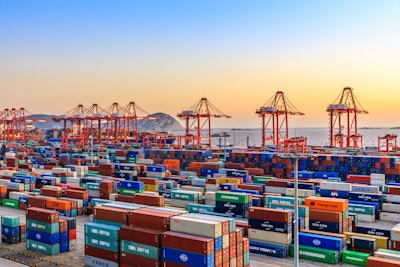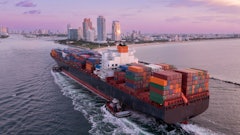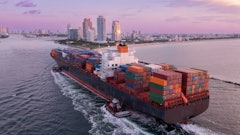
Greenhouse gas (GHG) emissions at major global ports continue to rise despite technological advancements and sustainability investments, according to Quantifying Port Carbon Footprints: Container Vessel Emissions Analysis in Major Global Terminals, presented by VesselBot.
"This report reveals the complex relationship between port activity and emissions," says Constantine Komodromos, CEO and founder of VesselBot. "Our data shows that while more vessels generally mean more emissions, performance and operational efficiency are crucial mitigating factors."
Key takeaways:
· Shanghai Port recorded the highest emissions (140,000 tons), surpassing Singapore despite handling fewer vessels, highlighting that vessel numbers don't directly correlate with emission levels.
· Port congestion and inefficient operations significantly impact emissions, with U.S. ports reporting the highest congestion levels, particularly in January and February 2025.
· U.S. ports experienced record-high container volumes and associated emissions in January and February 2025, driven by pre-emptive shipping ahead of new tariff implementations.
· Singapore's investment in digital twin technology demonstrates how technological innovation can mitigate emissions despite high-traffic volumes.















![Pros To Know 2026 [color]](https://img.sdcexec.com/mindful/acbm/workspaces/default/uploads/2025/08/prostoknow-2026-color.mduFvhpgMk.png?ar=16%3A9&auto=format%2Ccompress&bg=fff&fill-color=fff&fit=fill&h=135&q=70&w=240)


